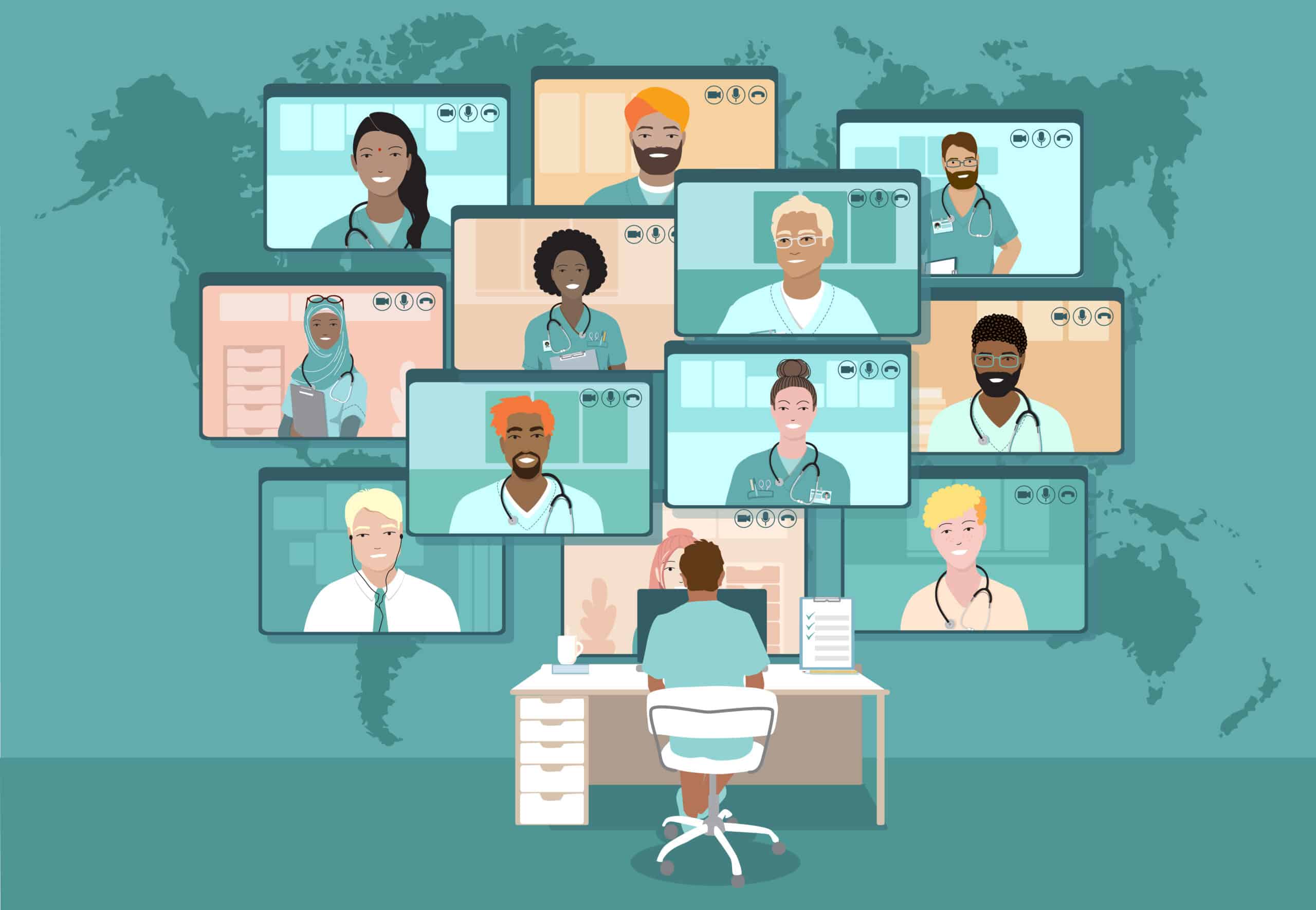Losing money is rarely a good thing. For hospitals and health systems, it is indeed problematic.
A report by the American Hospital Association (AHA) estimates that United States hospitals and health systems lost $323.1 billion through 2020, with almost 50 hospitals either declaring bankruptcy or closing. The analysis forecasts that total hospital revenue in 2021 could be down between $53 billion – $122 billion from pre-COVID-19 pandemic levels.
Similarly, delayed physician appointments mean that health systems face severely declining revenue, losing an average of $50 billion per month.
To combat these financial woes while attempting to keep their workers safe, many healthcare providers encourage non-clinical employees to work remotely as we continue to face the pandemic. Approximately 35-40 percent of employees across the globe have worked from home most or all of the time since spring of 2020. About 15% of employees in the healthcare sector, including individuals employed by health plans and insurers and those who serve as support and administrative staff, are working from home.

Let’s explore how flexibility and technology sync up to provide successes for healthcare employees and for patients.
Recognizing remote reliability
Roughly 80% of company leaders plan to let their employees work remotely at least part-time after the COVID-19 pandemic. Almost half of employees plan to work from home full-time once it’s over. Some employers, including hospitals and health systems, have implemented hybrid virtual models, in which some employees work on-premise and others work remotely. With almost 30% of workers reporting being willing to take a 10% – 20% pay cut to work remotely, this type of model could procure sizable savings for the healthcare industry.
There are certainly advantages of remote work in the healthcare community. Providers and organizations have the opportunity to improve safety and to overcome resource and capacity constraints. They can also enhance employee efficiency and productivity, improve morale, and reduce stress and burnout. These milestones are vital in lowering the incidence of treatment errors.
The utilization of remote work in healthcare can also empower healthcare teams and organizations to maximize resources and streamline treatment of patients, all while attempting to mitigate coronavirus infection rates.
Assessing benefits of digital technology
Although certainly not all healthcare employees are able to work remotely, the use of well-designed digital technology tools allow physicians, nurses, and other team members to improve patient care while decreasing the amount of time necessary to complete certain tasks. Resources such as telehealth, digital/remote check-in, online appointment scheduling, patient portals, electronic forms, and options to sign in and pay digitally can help provide a higher level of accuracy, enhanced patient engagement, increased patient privacy, and improved patient flow.

Some physicians prefer the use of technology for administrative purposes, and doctors satisfied with different applications of information technology are four times more likely to be happy with their medical practice. To promote value-based care, digital technologies offer the capability to improve the process of identifying populations for whom feedback is most needed, including individuals with multiple chronic conditions and those negatively affected by SDOH.
A prime example of digital technology in action is remote patient monitoring, which has the potential to dramatically transform care delivery, improve access to care for patients, increase workforce productivity, and optimize clinical operations. Improvements in these areas leads to improved patient outcomes.
For non-clinical staff members, digital patient intake solutions are helpful, as they help teams become more efficient, focus more on the patient experience, and reduce costs. Additional advantages of digital technology for patient intake include:
- reduced claim denials
- improved collection rates
- real-time data authentication
- better risk management
- improved medication safety
- expanded focus on clinical initiatives
Taking note of patient preferences
As an added benefit, many healthcare consumers prefer providers who use digital technology. Research has shown that a high percentage of patients seek providers with technology that offers digital scheduling, online payment options, portal and engagement capabilities, and results reporting tools. Approximately 90% of patients report that they don’t feel obligated to stay with healthcare providers who don’t deliver an overall satisfactory digital experience. Roughly 68% said they feel relief when their provider makes administration tasks, like appointment scheduling, digital.
Even before the pandemic, many respondents preferred to schedule doctor’s appointments online more than any other type of appointment. Patients also can utilize their personal smartphone to verify their insurance, sign consent forms and authorization releases, and verify or update clinical information – data that (with integrated technology) updates in real-time with their electronic record.
Now more than ever, healthcare consumers are looking for greater convenience and control in their own care. They don’t want to endure long wait times, either in scheduling an appointment or waiting to be seen by a physician, and they prefer being notified through technology about an upcoming appointment. The following statistics pinpoint why digital technology is needed in these areas:
- Prior to the COVID-19 pandemic, median patient total wait times — which include time spent in the wait area as well as in the exam room waiting to see a provider — ranged from 20 to 25 minutes.
- 97% of patients are frustrated by wait times at the doctor’s office.
- 30% of patients report walking out of an appointment due to a long wait, and 20% said they’ve changed doctors because of wait times.
- On average, a new patient who waits more than a month for a first appointment is more than twice as likely to cancel and not reschedule as a new patient who is scheduled within a week.
- Physician practices with longer wait times tend to receive lower patient satisfaction scores.
- The average wait time for four-star hospitals is 21 minutes, 22 minutes in three-star hospitals, and 29 minutes in two-star hospitals.
- The average no-show rate internationally is about 23%.
- Patients who don’t keep their appointments cost the healthcare industry $150 billion annually.
- Medical practices actively working to minimize no-shows can reduce no-shows by up to 70%.
- Each open, unused time slot costs a physician an average of $200.
Monitoring PHI and HIPAA
There are risks healthcare providers should monitor when utilizing digital technology and allowing employees to work remotely. Hospitals and health systems create, receive, and/or transmit protected health information (PHI). They must ensure that they comply with the Security Rule of HIPAA and its administrative, physical, and technical safeguards.
Without plans and processes to achieve this, they risk costly civic and/or criminal penalties, a damaged reputation, and decreased customer loyalty.

Let Harmony Healthcare’s expert consultants in population health management, reimbursement, and information technology show you how they can:
- empower your healthcare organization success with remote flexibility and digital technology expertise
- enhance your organization’s clinical and financial outcomes
- advance your organization’s transition to value-based care




